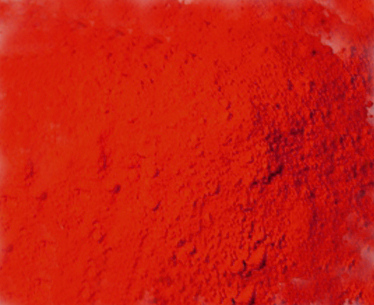The Golden Red C series replaces the Clariant LC Red
2025-05-06
The product of model Jinguang Red C, Red LC, has unique properties and wide applications among many other products.

Let's first talk about its background. In today's various industrial and daily necessities manufacturing fields, the requirements for raw materials are becoming increasingly diverse and refined. The Red LC product emerged under such a demand background. With its own series of excellent features, it has occupied a place in the related industry.
Its product features are very remarkable. It has the characteristic of showing intense golden light colors. This golden light is not the kind of fleeting color effect, but rather more durable and firm. When it is used to make ink, the ink will exhibit excellent fluidity, as if endowed with a dynamic vitality, and can be evenly distributed on various media during the printing process. Moreover, it has excellent sun resistance and heat resistance. Whether exposed to sunlight for a long time or in a high-temperature environment, it can maintain its stability. This is very important for products that need to be stored for a long time or used in special environments.
Take a look at its packaging specifications again. It is a very regular 25KG package. This packaging specification not only facilitates the storage of the product but also makes it convenient for transportation and access during the production process.
Its application scope is quite extensive, mainly used in ink, rubber, polyvinyl chloride and stationery products, etc. In terms of ink, the previously mentioned characteristics such as good fluidity and long-lasting color make the printed text and patterns bright and clear in color, and can maintain their color for a long time without fading. For rubber products, red LC can add unique colors to rubber and improve its performance to a certain extent, such as enhancing the durability of rubber. In polyvinyl chloride (PVC) materials, it can be integrated into them, providing beautiful color effects for plastic products without affecting the physical and chemical properties of PVC itself. In the field of stationery products, such as colored pens and paints, it can make stationery items present a unique red color with a strong golden light, attracting the attention of users.
Red LC is a red powder with a yellowish luster, and the pigment of this powder is very bright. It has a special solubility and is insoluble in water, ethanol, paraffin, etc. When it encounters concentrated acid, it will take on a cherry red color, which is a very bright and unique color change. When diluted, it will present a brownish-red precipitate. It is slightly soluble in 10% hydrogen (yellow), water and ethanol, but insoluble in certain organic solvents and benzene. When encountering an alcohol solution of hydrogen, it will present a deep brownish-red light, which is another unique color reaction. Its aqueous solution will produce a red precipitate when it meets hydrochloric acid and also when it meets concentrated hydrogen. These color reactions are of great significance in both chemical analysis and practical applications.
From the perspective of chemical structure, its molecular formula is C34H24ClN4O8S2Ba and its molecular weight is 888.98. Its PH value is between 7.0 and 8.0, which indicates that it has a relatively neutral pH level and will not be adversely affected by pH issues in many reactions and applications. Its specific gravity is 1.8, and this data reflects its material density characteristics. The oil absorption capacity (ml/100g) is between 40 and 50. This characteristic has significant reference value in application scenarios related to oils. Its lightfastness is 5, indicating that it performs well in terms of lightfastness. The heat resistance reaches 200℃. This relatively high heat resistance temperature further indicates its stability in high-temperature environments. The water resistance is 3, the oil resistance is 3, the acid resistance is 3, and the alkali resistance is 3. These data comprehensively reflect its tolerance in different environments and media. Its density is 1.65. This value, along with data such as specific gravity, provides an accurate description of the physical properties of the product in different application scenarios.



